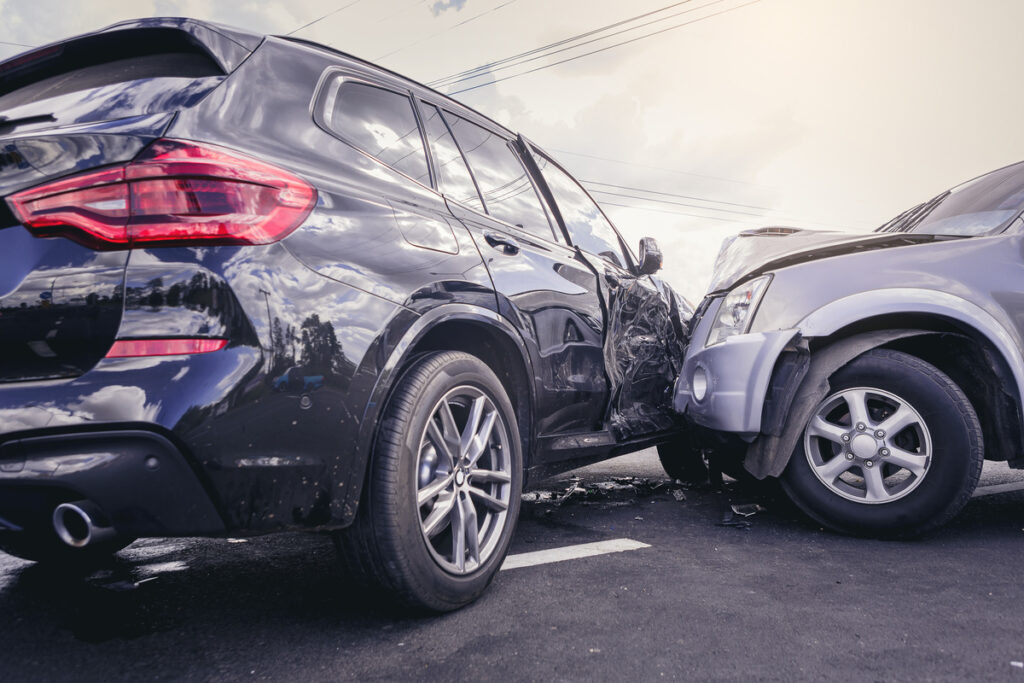When two drivers contribute equally to a car accident, determining compensation becomes a complex legal puzzle that many accident victims struggle to understand. In New Mexico, the concept of shared fault does not automatically eliminate your right to recover damages, but it significantly impacts the compensation you may receive from personal injury claims following the collision.
At Dominguez Law, we have successfully navigated countless shared fault cases throughout New Mexico, securing over $30 million in settlements and verdicts with a 99% success rate across more than 300 cases. Our extensive experience with New Mexico’s comparative negligence laws allows us to help clients understand their rights and maximize recovery even when they bear partial responsibility for the accident.
New Mexico’s Pure Comparative Negligence System
New Mexico follows a pure comparative negligence system, which allows injured parties to recover damages even when they share responsibility for the accident. Under this legal framework, your compensation is reduced by your percentage of fault, but you never lose your right to seek recovery entirely. This system differs significantly from other states that may bar recovery completely if you bear any fault for the accident.
For example, if a court determines both drivers are equally at fault for an accident resulting in $100,000 in damages, each party can recover 50% of their losses from the other driver. This means you could still receive $50,000 in compensation despite contributing to the accident’s cause.
Common Equal Fault Scenarios
Equal fault determinations often arise in specific types of accidents where both drivers’ actions contribute substantially to the collision. Intersection accidents frequently result in shared fault when one driver runs a red light while another speeds through a yellow light. Neither driver followed traffic laws completely, creating mutual responsibility for the resulting crash.
Rear-end collisions can also involve shared fault when the rear driver follows too closely, but the front driver makes sudden, unexpected stops without proper signaling. Lane change accidents commonly produce equal fault findings when one driver changes lanes without checking blind spots, while another driver speeds up to prevent the lane change.
Parking lot accidents often result in shared responsibility when both drivers back out of spaces simultaneously without checking for other vehicles. Weather-related accidents may involve equal fault when both drivers fail to adjust their driving for hazardous conditions.
How Insurance Companies Handle Equal Fault
Insurance companies approach equal fault cases strategically, often attempting to assign greater blame to the opposing driver to minimize their payout obligations. Each insurer conducts independent investigations, interviewing witnesses, reviewing police reports, and analyzing physical evidence to build arguments supporting their version of fault allocation.
The negotiation process becomes particularly complex when both insurers argue that their client bears less responsibility. These disputes can extend settlement timelines significantly as companies haggle over fault percentages. Understanding how to communicate with insurance companies during injury claims becomes crucial for protecting your interests throughout this process.
Your own insurance company may also work against your interests in equal fault scenarios. If they determine you share responsibility, they may reduce coverage or increase premiums regardless of the final legal determination.
Evidence Collection in Shared Fault Cases
Proving fault percentages requires comprehensive evidence collection from multiple sources. Police reports provide official documentation of the accident scene, witness statements, and preliminary fault assessments. However, these reports represent initial impressions and may not reflect the final legal determination of responsibility.
Physical evidence becomes particularly important in shared fault cases. Damage patterns on vehicles can indicate impact angles, speeds, and collision sequences that support or refute fault theories. Skid marks, debris patterns, and roadway evidence help reconstruct the accident’s progression.
Traffic camera footage, dashboard camera recordings, and smartphone videos provide objective evidence of driver behaviors before and during the collision. Witness statements from neutral third parties carry significant weight in establishing fault percentages.
The Role of Expert Witnesses
Complex equal fault cases often require expert witnesses to analyze evidence and provide professional opinions on accident causation. Accident reconstruction specialists use physics principles, engineering analysis, and computer modeling to determine how accidents occurred and which factors contributed most significantly.
Medical experts may also testify about injury causation, helping establish which impacts caused specific injuries. This testimony becomes important when multiple collisions occur or when pre-existing conditions complicate injury assessments.
Economic experts calculate damages for lost wages, future medical expenses, and diminished earning capacity. Their analysis becomes particularly important in high-value cases where precise damage calculations affect final recovery amounts.
Protecting Your Recovery Rights
When facing equal fault allegations, immediate action protects your legal interests. Avoid admitting fault at the accident scene or to insurance representatives. Even statements like “I’m sorry” can be interpreted as fault admissions that damage your case later.
Document everything possible at the accident scene, including vehicle positions, damage patterns, road conditions, and weather factors. Take photographs from multiple angles and collect contact information from all witnesses present.
Seek medical attention immediately, even for seemingly minor injuries. Delayed medical care can be used to argue that accident-related injuries were less severe than claimed or caused by other factors.
Maximizing Compensation in Equal Fault Cases
Equal fault scenarios require strategic legal approaches to maximize recovery. Understanding how comparative negligence affects personal injury cases in New Mexico helps victims pursue all available compensation sources. Additionally, cases involving commercial vehicles may fall under New Mexico’s truck accident laws, which can provide additional recovery options through increased insurance coverage requirements and stricter liability standards.
At Dominguez Law, we meticulously prepare every case with the expectation of trial, ensuring comprehensive evidence collection and expert witness preparation. Our commitment to fighting corporate greed and protecting individual rights drives us to pursue maximum compensation for every client, regardless of fault percentage. For a free consultation about your shared fault car accident case, call us at (505) 850-5854. Se habla español.



